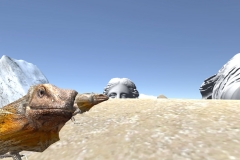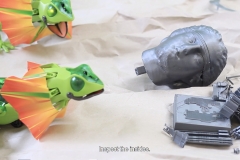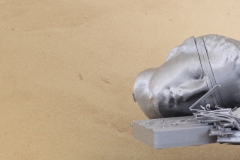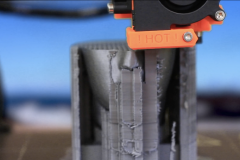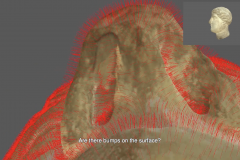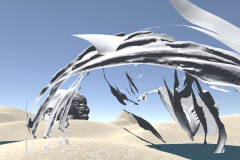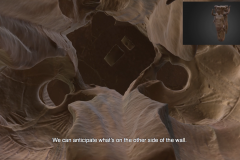Film, 05:10
Two lizards offer their view on ancient Greek sculpture and the classical ideals of art.
In Greek mythology, the birth of Aphrodite, the Greek goddess of beauty is that she is born from the foam of a wave. Philosophers and artists of Ancient Greece have devoted their lives to capture the awe of the ideal human form through their respective mediums.
2800 years later, another sculpture of Aphrodite’s head emerges on a beach, waves crushing in the background. This one, however is built by a 3D printer. It is a replica, that had to go through a pipeline of processes from scanning the original artefact, to digitising the 3D form, to translating shape to code that then is read by the printer, which finally pieces the shape back into the physical world. The 3D printed Aphrodite as well as the scanned 3D model are not made out of marble like the original, but of plastic polymers. Unlike the impenetrable marble sculpture, these are porous shapes, husks that can be explored on the inside.
With this new-found space inside objects due to digital processes, there is the question of how can we best explore and appreciate the insides of these pieces?
Enter the Lizards.
Here, the Lizards are seen as artistic digital disruptors, completely disregarding the value of harmonious forms, set by the classical standards of beauty. They have changed the sense of sight for the sense of touch and hearing. Swapped form for terrain. The film questions whether with the rise of digital processes of 3D printing and modelling, another way of seeing and appreciating art is needed. The Lizards are seen as symbols for the other – the non-human gaze on art. As the lizards are presented through 3D animation and robotic models, their gaze represents the emergence of machine vision and its impact on how we look at art in the future.
